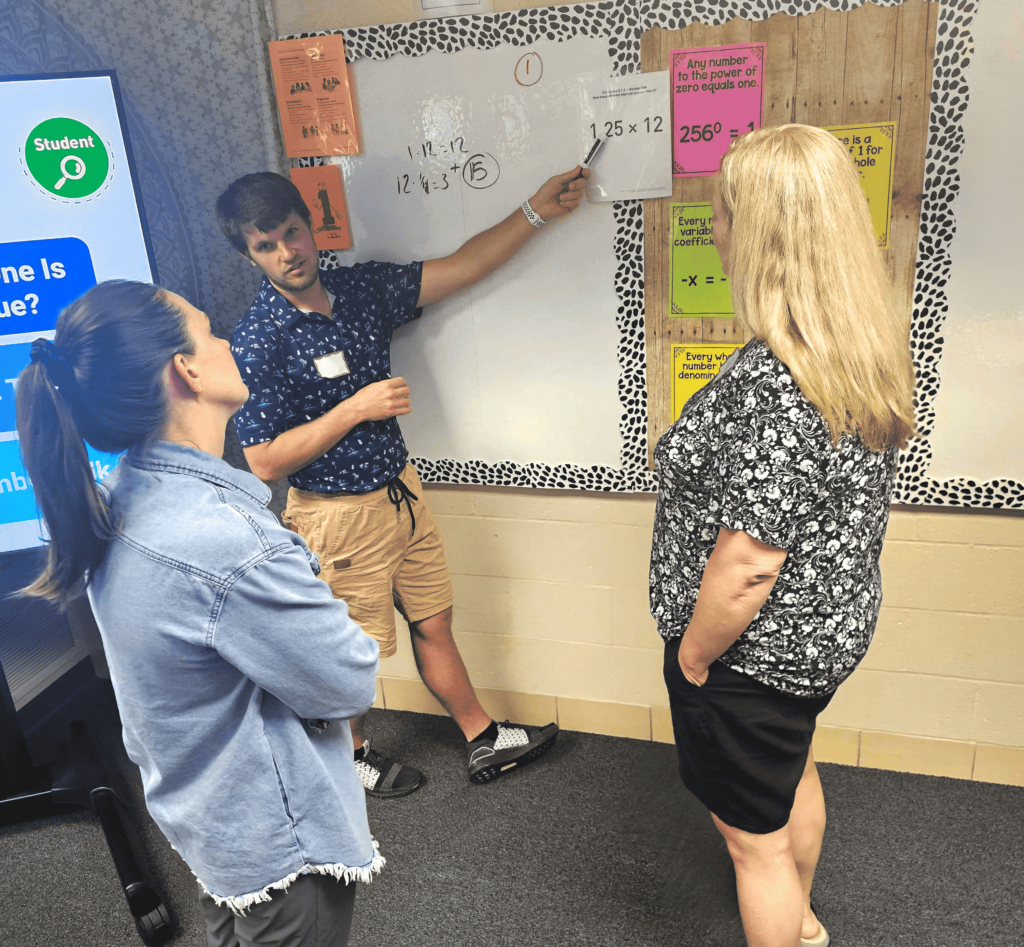September 2024

The calendar turns to August and September, and all of a sudden, social media is flooded with photos—bringing smiles, memories, and even some tears. There are babies starting Kindergarten, olders starting middle school, seniors starting the first day of their last year of high school, and even those moving into dorms for the first time. This season is a great time for an educator to think about the newness of a school year. Whether you are early in your career or are approaching your final years, there are always ideas to incorporate, strategies to implement, and relationships to build as the new school year starts.
For many of you, this school year has you embarking on a journey to create a student-centered, problem-based classroom. For others, you have been on this journey for quite a while. For more than 30 years, CPM Educational Program has been supporting teachers on this journey. Making the shift from a less student-centered teaching model that you probably experienced as a math student is not easy, but it is doable and so rewarding. CPM continues to refine the components of support available to teachers, schools, and districts as they continue making this shift. As you begin to set goals this year and think about your practice, you may consider some of the following ideas.
Commitment to planning: When teachers are pressed on all sides and time is at a premium, the first part of the professional practice that seems to go is the commitment to planning. The planning routine may too quickly become a glance through the teacher notes or Authors’ Vision and the problems, but not an investment of concentrated planning time. Do not let that become the case for you this year. Set aside time to intentionally plan, preferably with colleagues, at least once a week.
Commitment to collaborative teams: Maybe your school has begun collaborative team time for teachers, sometimes referred to as a Professional Learning Community (PLC). Or perhaps your school is well-versed in this practice. As you begin this next year, remember to set collective commitments as you begin your work. Consider keeping the focus on the items you can control as a teaching team. Often, with all the initiatives being asked of teachers, it is easy to lose focus on our circles of influence.
Commitment to effective feedback and assessment strategies: Feedback and assessment are two areas in which a teacher can continually focus. As you consider options to incorporate strategies into your practice, remember that the goal is to support students in becoming independent learners. Find strategies that will allow them to reflect on and analyze their own learning and give feedback to their classmates. Provide them with a learning map at the beginning of a unit of study or chapter, allowing students to monitor their own progress toward the learning outcomes. Whenever possible, share examples of student work from previous years so that students know exactly what is expected of them to demonstrate understanding.
Commitment to effective instructional strategies: There are many choices a teacher makes as they facilitate students’ interactions with tasks. You may have read or heard about Peter Liljedahls’s Building Thinking Classrooms strategies. This year, try to incorporate some of the ideas there that include students working at vertical non-permanent surfaces. Try using random grouping to form your student teams as they work on tasks.
As you get this school year started, set reasonable goals for yourself. Choose one or two goals and give yourself grace as you work toward meeting them. Teaching is a demanding profession. There will always be something to improve. Celebrate success this year and enjoy the journey. You are making a difference with every student you interact with.
Liljedahl, P. (2020). Building Thinking Classrooms in Mathematics, Grades K-12 (first). Corwin.
Sharon Rendon
sharonrendon@cpm.org